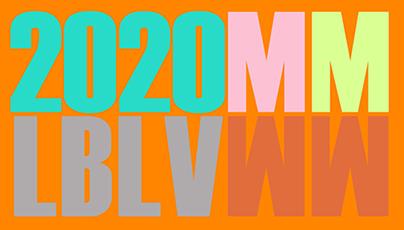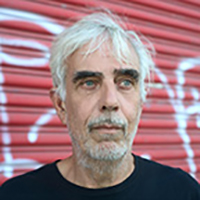|
<<<BACK TO HOME PAGE | <<BACK TO ALUMNI LIST | <PREVIOUS ARTIST | NEXT ARTIST> |  |
|
Anthony Bondi, A Forest Glade, 2020, video I am interested in the documentation of ephemeral spaces. Such work raises questions about the subjectivity of documentation. A mirage can be a more durable artifact than the the atmospheric effects that create it. ___________________________________________________________________________ Anthony Bondi, born in 1954 in Las Vegas, lives and works in Las Vegas. My work is regionalist, focused on mythologies that develop around geographical spaces that are hostile to human life. Within such spaces our survival is dependent on our proximity to grids of commerce and power. I use industrial processes and retail products as well as craft skills such as woodworking, cutting paper, and stitching. Useful materials have been hula hoops, plastic lizards, loofah sponges, and ball chain. The common value of them is their durability outdoors in a hostile climate. The first West Coast Computer Faire, held in 1977, has been described as the beginning of the PC industry. At the conference, the filmmaker John Whitney presented a paper, “Digital Pyrotechnics: The Computer in Visual Arts.” He wrote: “It should be of particular interest to realize that computer graphics, this fifteen-year-old infant, is patently capable of bringing forth a totally different kind of visual experience as unique and riotously enjoyable-much cheaper-more energy/materials intensive than the Chinese, pre-Christian invention of fireworks.” I audited a class he offered at UCLA, in 1978, where he offered me a copy of his paper. Whitney’s films were only available for public viewing as one thread among many in the genre of Underground Films. In LA, such films typically drew an audience of 50 to 100 people. I spent about ten years focused on this culture and the work of Jordan Belson, Kenneth Anger, Jack Smith, Stan Brakhage, the Whitney family, and Hollis Frampton. All of them used DIY high tech to produce their work. Their images were highly manipulated, created as much in laboratories as with a lens. As a child, I was taught the mechanics of various printing processes. It was unclear whether a document created for reproduction had intrinsic value except as a source for reproduction. In 1989, I brought this background to wondering what could be done with new digital copiers. Collage was a technique to make use of them. Collages combined scissors and glue sticks with the new digital technology. In time ahead, I showed work made this way in many Las Vegas art spaces. In the early 1990’s I was among the founders of the Committee for Public Safety, a Las Vegas-based group that developed within the UNLV student radio station, KUNV. Over the next ten years, the CPS produced and documented 100 or so events around Vegas. Multi-media was a regular element as well as a standing invitation to anyone with an interest to participate in its work. The CPS was widely represented in anchoring an art community in downtown Las Vegas. In 1995, I met the distortions of visual scale that result from the far horizon of Black Rock Desert. For the next twenty years, I produced large projects for Burning Man. It was an opportunity to engage with an emerging global culture whose parameters were yet undefined. Physical interactivity with art would be a primary element in this culture. I produced mostly tactile-based pieces in which the appearance of the piece was incidental to the source of drama within it. In 2000, I was granted a patent on play environments based on tactile immersion. Here and there were people who thought it was unjust that so broad a patent should be granted to me or anyone. My patent might be immoral, a cynical exploitation of the incompetence of the patent office. Having come of age during the heyday of Conceptual Art, I saw the patent application itself as an art project. And, I spent ten years refining the concept. In some ways, this is a process of developing precise language. In 2014, I was among those featured as local correspondents when Anthony Bourdain’s travel show, Parts Unknown, visited Vegas. It appeared that I spoke without notes. Instead, much of what I said had been carefully written long ago, recited on KUNV, and then re-written to be recited again for an interview in Monk magazine. The soundbites I used in Parts Unknown were the third iteration of the project. A positive local response to the pieces led me to my present occupation, long-form writing about the mythologies that develop around spaces that are hostile to human life. |
© LONDON BIENNALE LAS VEGAS 2020 all site contents and artist images are copyright protected

